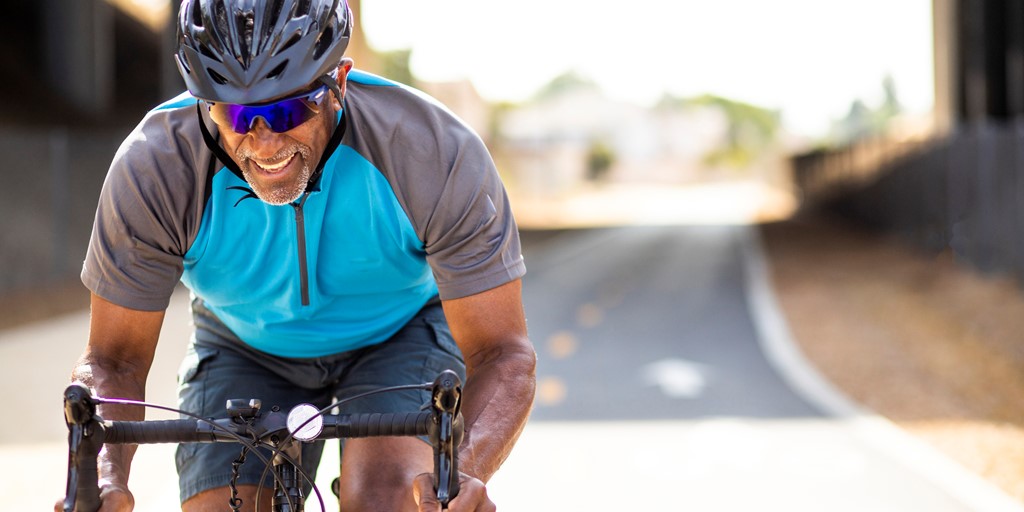

Quadriceps
Your quads are where you get your power from so it’s imperative that you work really hard to make them as tough as possible. How do you think Chris Froome powers up almost vertical climbs deep in the Alps? Through incredible fitness, yes. But his quads are arguably the best and toughest in the road cycling business.
There are several exercises you can do to build up your quads, one being the leg press in the gym - this involves pushing a bar out in a kicking out motion with weights on either side. It isn’t only in the gym where you can strengthen your quads, you can do simple squats anywhere, with or without weights depending on what difficulty level you require. Also don’t forget, simply riding your bike at any time is really good exercise for your quads, especially up steep hills!
Core
A strong core is absolutely vital when riding for long distances. Although it is the lower body that produces the power to push the pedals around, a strong core keeps the body stable on the saddle. A strong core also reduces the risk of back injuries, commonly caused by weak abdominals, obliques and latissimus dorsi that are put under big pressure whilst riding long distances.
There are many effective exercises used to work your abdominals, but the one I’ve found to be most effective is good old fashioned crunches. Lie on your back, preferably on a mat with your hands over your ears. Slowly bring your head and torso about six inches off the ground, hold for three seconds, and then return to the starting position. Do 100 a day for two weeks and notice the difference!
Hamstrings
Your hamstrings are arguably just as important as your quads when cycling. There’s no point having tree trunk size quads if your hamstrings don’t match. If your quads are much larger than your hamstrings equivalent then you will cause unnecessary stress on your hamstrings and on a relatively long distanced ride, you’re quite likely to damage them.
Your hamstrings are absolutely vital to your overall fitness and if severely tear or rupture a hamstring, it is always very hard to come back from and some say you can never reach your peak speed once you’ve injured your hamstring severely.
This is why it’s imperative to build up strength in your legs and hamstrings not only to prevent injuries, but also to boost performance levels. One great way of building muscle in your hamstrings is by using the seated leg curl in the gym.
Glutes
Your glutes, are large strong muscles that, along with your quads provide the majority of the power supplied to the pedals, so it’s important that you work hard to toughen them up and make them as strong as possible.
Squats are the best way to build up muscle in your glutes, but there are many different ways to that you can squat. If using dumbbells, you should start on roughly 10%-15% of your body weight. Stand with your feet hip-width apart, step backwards with your left leg into a reverse lunge, (this exercise is much better when done in reverse as it creates much less stress on the knee than a standard forward lunge) make sure you keep your back straight and your shoulders level during the whole set. Try three sets of ten on each leg.
The much harder version of the squat (and more effective!) is when weights are placed on each side of a 20kg bar and the same instructions apply. Feet hip-width apart, keep your back straight and your shoulders level all the way down into the squat, and again on the way up. Try three sets of ten.
Back
The last, but by no means least is the back muscles, which are essential for any cyclist. In order to keep your posture when riding for long distances you need strong, sturdy muscles in your back, otherwise you will feel the effects of other muscles overcompensating to make up for your weak back and can easily cause injuries in your glutes or hamstrings.
Deadlifts are a really good exercise to strengthen your back muscles. Bend at your hips and knees and grab the bar with an overhand grip. Slightly arch your lower back whilst keeping your arms straight. Without allowing your back to bend, stand up slowly with the bar. Hold the post for a second, then lower the bar to the floor. Do three sets of ten.
Please note the information provided on this page should not be taken as advice and has been written as a matter of opinion. For more on insurance cover and policy wording, see our homepage.
